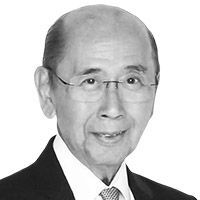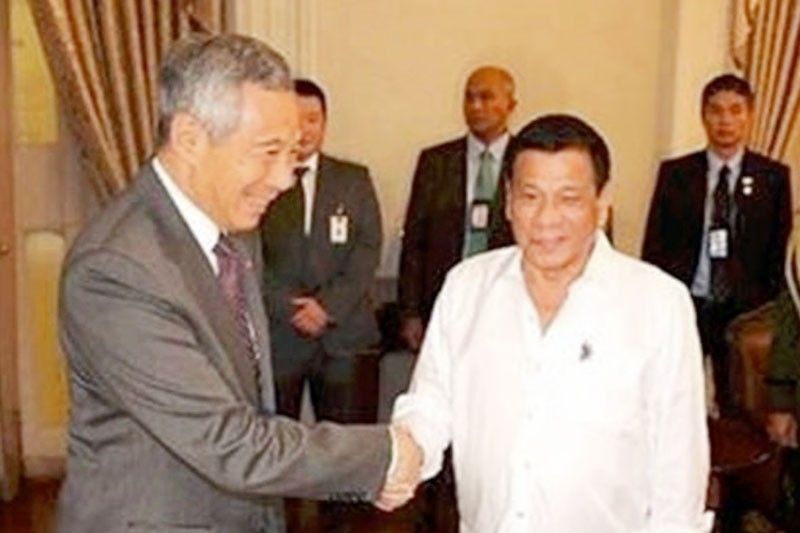Justice Antonio Carpio


There is a buzz going on in legal circles that the members of the Supreme Court are urging the President to appoint a permanent replacement for removed Chief Justice Lourdes Sereno as soon as possible to calm the restless judiciary.
The Supreme Court, whose reputation as the independent third leg of government under the principle of check and balances, has taken a battering over the manner in which it removed CJ Sereno. The public uproar has placed the entire judiciary in a state of uncertainty. I understand that 13 associate justices met and shared the view that only associate justice Antonio Carpio can bring back normalization and restore the sullied image of the judiciary.
I support associate justice Antonio Carpio as the next chief justice of the Supreme Court. He is most senior and most able. From what I hear, the members of the judiciary, including the rank and file employees, also prefer Justice Carpio, as does the legal community. I understand Justice Carpio will not accept a nomination to be chief justice if he will just replace one removed by a Quo Warranto petition. I am told he will only accept a nomination if Chief Justice Sereno resigns or is impeached. You will recall that Carpio wrote a dissenting opinion to the majority’s view that a sitting justice can be removed through Quo Warranto. He argued that the Constitution clearly provides that impeachable officials can only be removed from office through impeachment. Although Justice Carpio’s long held ambition to become CJ, cannot be denied, the fact that he has chosen to remain true to his conviction even at the risk of losing this opportunity – he retires in less than two years – speaks volumes of his character.
I am told that the 13 justices intend to issue a “Sense of the Court” resolution addressed to the President that the tradition of choosing the chief justice through seniority be respected. The Supreme Court is about as stiff as they come on tradition as any government institution. And while there is no written rule on how a chief justice is selected, prior to ex-CJ Sereno, the CJ was chosen from a pool of three to five of the most senior of the associate justices. This break from tradition would ultimately be a contributing factor – there were other reasons, of course more egregious from the other Justices views – to the bench turning against her. Going back to tradition would obviate any debate that deep selection inevitably engenders about who is most qualified.
The next chief justice has his work cut out for him. He must restore its integrity – not just the Supreme Court, but the Judiciary itself – and its flawed image as having become politicized over the years. He must have a deep commitment to the rule of law and be a staunch defender of the Constitution. That said, he should ensure that while the court is the ultimate defender of the rule of law, it does not make it the ruler of the country and be the final arbiter on every issue brought to it in a legal framework. That is to say the law, not the judges, should govern. I believe the Supreme Court overriding consideration should always be the public interest and that can be best served by maintaining the quality of the Court and confidence in its competence and independence. I believe Justice Carpio has over the years tempered his ambition with the acceptance of the responsibility of being the final arbiter of the law. He is the right man for the job in these critical times when faith in all three branches of government has been eroding.
Dressing up for the presidency
Just about anyone popular enough for one reason or another can be elected to the presidency. Anyone can dream of becoming a president. There are minimum qualifications, of course, but by and large this is the essence of democracy. And so in the Philippines, we have had presidents coming from different backgrounds.
We have had two who previously served as mayors – former president and now Manila Mayor Joseph Estrada (multiple term San Juan City Mayor) and now incumbent President Duterte who served seven terms as mayor of Davao City. They brought with them their unique nicknames – “Erap” and “Digong”. They, of course, also brought their sartorial style with them to the closets of Malacanang. This style served them well in their previous political life and has become integral to their persona.
Both project the tough guy image and so the obligatory leather jacket and rolled sleeves screaming “buckle down to work”. Both disdain wearing a necktie. It’s when they travel overseas or receive visiting heads of state where they differ. Although he must have felt uncomfortable, Erap wore his suit and tie and his shirt properly buttoned. In contrast, Digong has drawn attention to what can be described generously as lackadaisical attire as was the case during a visit to Singapore for an ASEAN meeting.
Dressing up for important occasions has always been equated with the importance accorded to the occasion and respect for the host. So while it may work at home, unwittingly, the President may be conveying a message that is wholly unintended when he meets his peers – usually heavily covered by the media.
With high office comes scrutiny of everything, including his fashion sense and style – particularly in this age of social media. I suggest – tongue in cheek – for the President to make the ultimate sacrifice of properly wearing a suit or barong to give the office and position the respect it deserves.
- Latest
- Trending




























